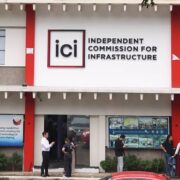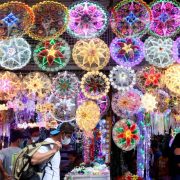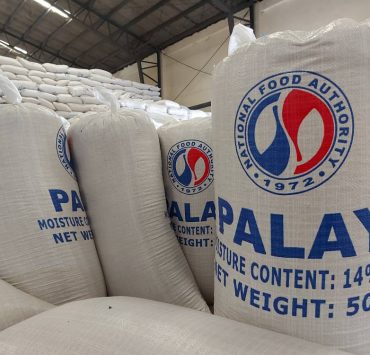A trek in Quirino province

Maddela, Quirino—As the 4×4 truck trudged along the rough road leading to the sitio (village) of Dialenese, deep in the Sierra Madre, the full canopy of stars hung over us, with the Milky Way spread out like celestial moss.
Together with the local Kiyaw Mountaineers, we were aiming to climb Mount Dialanese (pronounced “djalanis”)—the highest point in the province—as part of a larger visit to Quirino to learn more about the province that, until yesterday, was the only one I hadn’t visited in mainland Luzon. Though overshadowed by neighboring Isabela and Aurora in terms of area and population, Quirino has its own attractions, being located at the heart of the Sierra Madre and Caraballo ranges, not to mention having a distinct cultural heritage as homeland to Dumagat, Bugkalot, Gadding, and other indigenous communities.
Our arrival to Quirino the previous day—after a long road trip from Manila via the scenic Malico road—was full of positive omens: a welcome arc of a rainbow as we crossed from Cordon, Isabela to Diffun, Quirino, and, as we approached Maddela, the appearance of Mount Dialanese itself, majestically rising to over 1,800 meters above sea level above the other peaks of the range. Several years ago, the trip would not have been possible, at least not in the three-day timeframe we had allotted for it. Today, a series of expressways, diversion roads, and farm-to-market roads have closed the distance between metropole and hinterland, eliminating the need to spend a day just trekking to the trailhead. Particularly for the Sierra Madre, the improved peace and order situation—after decades of armed conflict—has allowed once-unthinkable ecotourism activities to take root.
An excursion to Governor’s Rapids—one of the famed attractions named after a Japanese official who was supposed to have drowned in the waters—was another confirmation of the province’s ecotourism potential, with spelunking, whitewater rafting, birdwatching, and rock climbing just a few of the possibilities.
But it was really the trip to Dialanese, the following day, that showed the province’s inner beauty even as it revealed the remaining challenges. In the academic literature, researchers have debated whether kaingin (swidden farming) is a destructive farming method, with the anthropologist Wolfram Dressler and colleagues (2021) describing an “anti-swidden politics” that criminalizes indigenous communities. Beyond such traditional practices, however, the conversion of forest land into agricultural land—by lowlanders and “uplanders” alike—is clearly occurring in unsustainable pace and is irreversibly altering the forest landscape. Throughout our trip, there were numerous police checkpoints ostensibly to catch illegal loggers and poachers, but without any alternative livelihoods, the forest is a resource to be extracted, and it will take vigorous supportive (as opposed to punitive) interventions on the part of the local and national governments to arrest this trend.
In Sitio Dialanese itself, as with other upland villages I’ve visited, there are signs of change that may be just as socially and economically consequential as land conversion and the road that will slowly but surely grow wider and smoother: the arrival of internet access in the form of piso Wi-Fi, accompanied by the use of mobile phones. Rice remains very much in demand as prized staple, notwithstanding the abundance of other food sources; there were also chickens and native pigs roaming around. Among some of the Dumagats, hunting remains a cherished activity, and Mount Dialanese was one of the rare mountains where the barking of the deer was as common as the shrieks of the hornbills. But for how long?
We saw a green pit viper along the trail, but given my past (mis)encounters with wasps and bees, I was more afraid of the giant beehives that made us tread furtively and lightly. Indeed, the fauna was amazing and the flora equally so: orchids, lichens, mushrooms of all colors. The river crossings were fun and the heart-pumping, acrobatic trail to the mossy-forested summit was the athletic highlight of the 25-kilometer trail. Overall, it turned out to be a challenging hike, a worthy member of the pantheon of mighty Sierra Madre peaks—some of which I’ve also climbed like Cagua Volcano in Cagayan, Mount Bintuod in Nueva Vizcaya, Mount Kemalugong in Nueva Ecija, and Mount Mingan in Aurora—and I wish the Kiyaw Mountaineers all the best in their efforts to document and establish more trails in the province.
On the long descent, while trying to dodge all the limatik (leeches), lipa (poison ivy), and rattan thorns our way, I had some questions for myself: Can ecotourism save the forests? As more and more provinces become “accessible,” how can the local tourism infrastructure grow in ways that are environmentally sustainable from the beginning? And how can indigenous communities be involved in ways that empower them and allow them to preserve—if they so wish—their ways of life?
As if to highlight the importance of the above questions, thousands of fireflies put on an unforgettable show on our way back from the mountain.
Gideon Lasco, physician, medical anthropologist, and columnist, writes about health, medicine, culture, society, and in the Philippines.


















